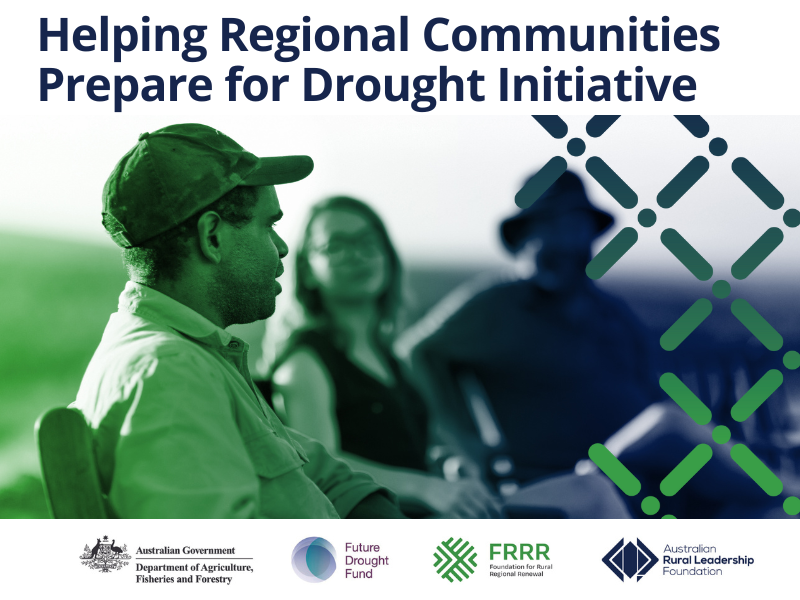Media releases (soft launch): 24 February 2023

The Foundation for Rural & Regional Renewal (FRRR) and the Australian Rural Leadership Foundation (ARLF) are looking for a local NFP partner to work with them across the Loddon Campaspe region as part of the Helping Regional Communities Prepare for Drought Initiative Community Impact Program.
The region encompasses the Campaspe, Central Goldfields, Greater Bendigo, Loddon, Macedon Ranges and Mount Alexander Shires.
The Initiative is funded through the Australian Government’s Future Drought Fund and designed to help agriculture-dependent communities across remote, rural and regional Australia enhance their preparedness for drought.
The $29.6 million investment over three years builds on the Future Drought Fund’s previous Networks to Build Drought Resilience program (led by FRRR) and the Drought Resilience Leaders program (led by ARLF).
The place-based Community Impact Program is designed to support community members and not-for-profit organisations to drive local action that helps prepare for drought. There are two main components to the program:
- Community Impact Grants: This between $200,000 and $500,000 available and FRRR will work with the lead community organisations to develop, co-design and deliver projects that strengthen community networks, capabilities and facilities that support drought preparedness; and
- Community Leadership Activities: ARLF will offer a range of funded leadership development activities to support community members to develop their leadership skills, and equip them with the networks to respond to drought preparedness in their community.
FRRR’s Disaster Resilience and Recovery Lead, Nina O’Brien, said that this a great opportunity for the communities in Loddon Campaspe to proactively strengthen drought resilience.
“While there has been a lot of flooding in recent months, it’s highly likely that it won’t be too long before drought is on our radar. Rural communities are better able to withstand the impacts of events like drought – and indeed other disasters – when they are strong and well connected. The overall aim of this program is to facilitate increased social connection, strengthen network opportunities and link capacity building opportunities to ensure widespread local benefit, so that communities are better prepared for the future.
“But we know that looks different in each community, which is why we are looking for a local lead partner. They will work with other community members and organisations to identify what local action is most appropriate. FRRR staff will be there to support the process and we’ll also fund a facilitator to work with the community to get the best outcome possible.
“The grants can fund projects, events, initiatives, training, capability building and small-scale community infrastructure projects and we’re really keen to make sure that First Nations communities and younger people are also engaged in drought resilience planning and action,” Ms O’Brien explained.
As part of the program, ARLF will offer a number of optional and complementary Leadership Development Activities at no cost to the successful applicants. These are designed to strengthen the leadership capabilities of communities to build individual and community drought resilience.
ARLF’s Chief Executive Officer Matt Linnegar said that because every lead organisation and region will be at a different point in their resilience journey, ARLF has a number of options that communities can tap into.
“We have five leadership development activities, ranging from intensive residential leadership programs to a series of deep-dives into particular leadership topics to group coaching. Each is underpinned by the concepts of adaptive leadership, resilience and network leadership.
“Applicants will need to include their preference for leadership development activities when they lodge their express of interest for the Community Impact Program, and we will work closely with applicants to refine their preferences as we move through the collaborative project design phase,” Mr Linnegar explained.
Initial expressions of interest close 22 March 2023, with shortlisted groups commencing co-design in their communities in May and funding confirmed in August 2023. Groups will have until June 2025 to implement the projects.
Interested groups can learn more about the program and lodge their EOI by visiting www.frrr.org.au/impact-program.

